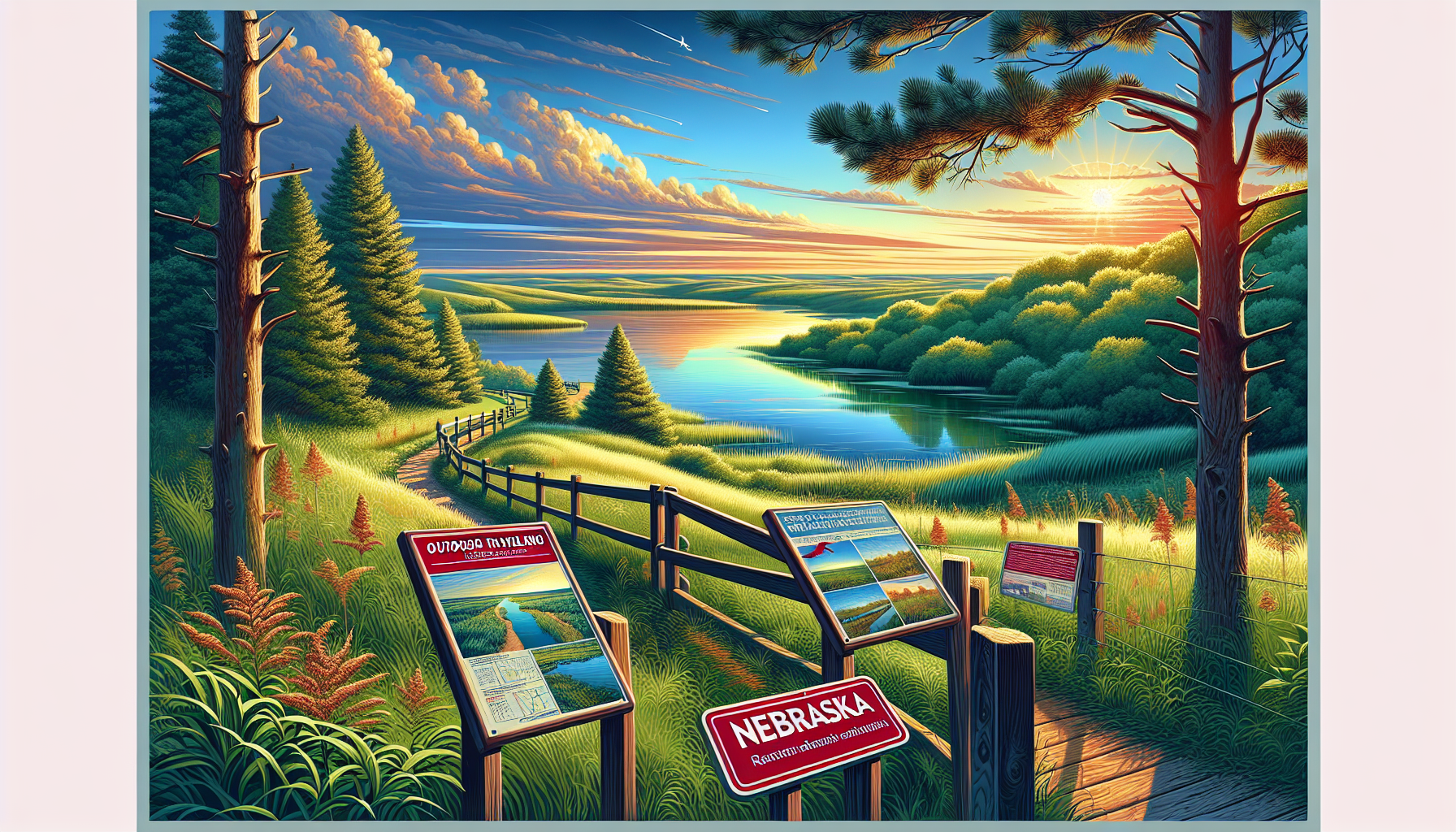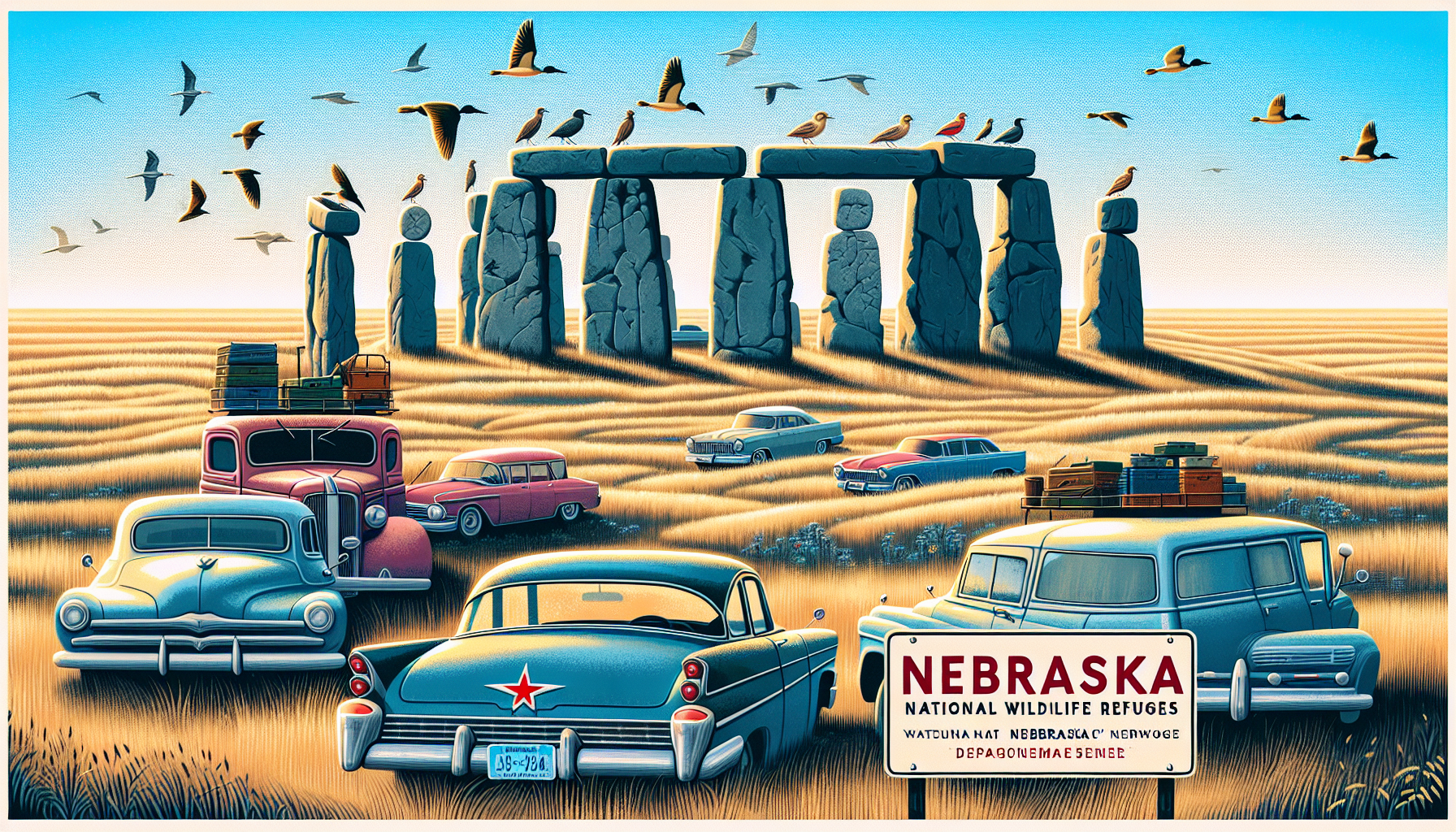Wildcat Hills Landscape in Nebraska

Located in the southern part of the Great Plains region in the United States, the Wildcat Hills landscape in Nebraska spans across Scotts Bluff and Morrill counties, approximately 30 miles south of Gering and Scottsbluff. The area is known for its unique geology and diverse ecosystems. The Wildcat Hills are part of the High Plains region, characterized by flat-topped hills made of hard caprock, and deep canyons carved by streams and rivers.
One of the distinguishing features of the Wildcat Hills landscape is the presence of seven distinct topographic zones. These zones vary significantly in soil type, elevation, and vegetation cover, resulting in diverse landscapes that range from lush forests and grasslands to rolling hills and rocky outcrops. The region is home to several unique geological formations, including Ash Hollow State Historical Park, a scenic area characterized by narrow canyons, steep cliffs, and numerous fossil sites.
Another noteworthy aspect of the Wildcat Hills landscape is the plethora of wildlife habitats present in the region. These habitats support an diverse range of flora and fauna, including plains cottonwood, green ash, and hackberry trees, as well as animals like mule deer, white-tailed deer, and wild turkeys. The hills also harbor numerous archaeological sites, including the Ash Hollow Cave, which contains artifacts dating back to the Paleoindian period.
A prime example of the region's rich archaeological history is the Hudson-Meng Bison Kill Site, a well-preserved archaeological site near Crawford. The site, dating back to around 9000 years ago, contains the remains of over 600 individual bison, making it one of the largest known bison kill sites in the Western United States.
The Wildcat Hills landscape has also garnered attention due to its potential for scientific research. For example, researchers from the University of Nebraska-Lincoln have conducted studies on the region's unique combination of rock layers and plant life, hoping to shed light on the area's geological and ecological history.
The region offers numerous recreation opportunities, including hiking, camping, and scenic drives. Wildcat Hills State Recreation Area is a popular destination for nature enthusiasts and adventure seekers alike. This scenic park offers over 29 miles of hiking and biking trails, as well as picnic areas and campgrounds.
One notable route for those traveling through the area is the Wildcat Hills Scenic Byway, which runs along the southern edge of the Wildcat Hills State Recreation Area. This scenic drive takes you through some of the region's most stunning landscapes, including the rolling hills and valleys that make the Wildcat Hills so picturesque.
One of the distinguishing features of the Wildcat Hills landscape is the presence of seven distinct topographic zones. These zones vary significantly in soil type, elevation, and vegetation cover, resulting in diverse landscapes that range from lush forests and grasslands to rolling hills and rocky outcrops. The region is home to several unique geological formations, including Ash Hollow State Historical Park, a scenic area characterized by narrow canyons, steep cliffs, and numerous fossil sites.
Another noteworthy aspect of the Wildcat Hills landscape is the plethora of wildlife habitats present in the region. These habitats support an diverse range of flora and fauna, including plains cottonwood, green ash, and hackberry trees, as well as animals like mule deer, white-tailed deer, and wild turkeys. The hills also harbor numerous archaeological sites, including the Ash Hollow Cave, which contains artifacts dating back to the Paleoindian period.
A prime example of the region's rich archaeological history is the Hudson-Meng Bison Kill Site, a well-preserved archaeological site near Crawford. The site, dating back to around 9000 years ago, contains the remains of over 600 individual bison, making it one of the largest known bison kill sites in the Western United States.
The Wildcat Hills landscape has also garnered attention due to its potential for scientific research. For example, researchers from the University of Nebraska-Lincoln have conducted studies on the region's unique combination of rock layers and plant life, hoping to shed light on the area's geological and ecological history.
The region offers numerous recreation opportunities, including hiking, camping, and scenic drives. Wildcat Hills State Recreation Area is a popular destination for nature enthusiasts and adventure seekers alike. This scenic park offers over 29 miles of hiking and biking trails, as well as picnic areas and campgrounds.
One notable route for those traveling through the area is the Wildcat Hills Scenic Byway, which runs along the southern edge of the Wildcat Hills State Recreation Area. This scenic drive takes you through some of the region's most stunning landscapes, including the rolling hills and valleys that make the Wildcat Hills so picturesque.
